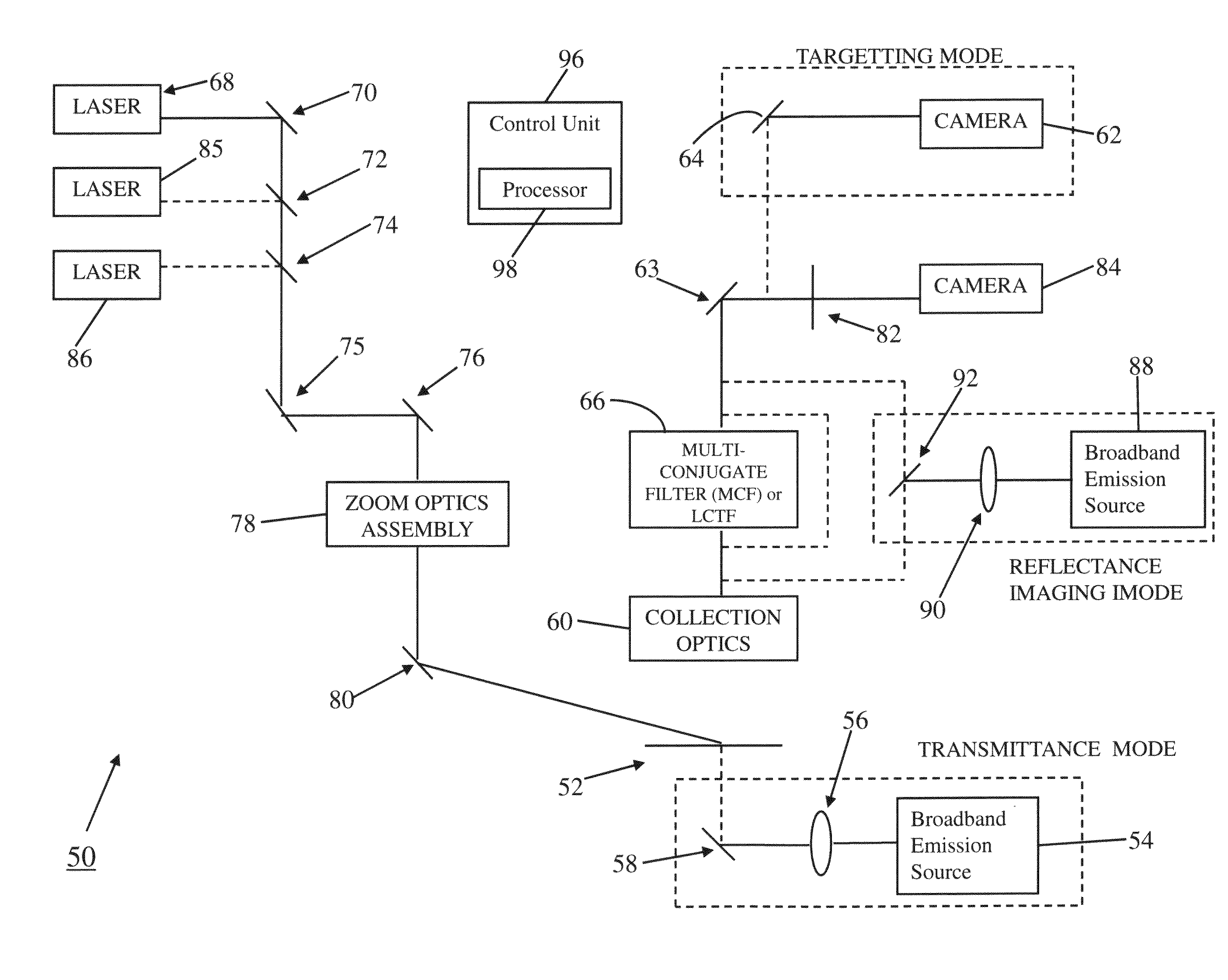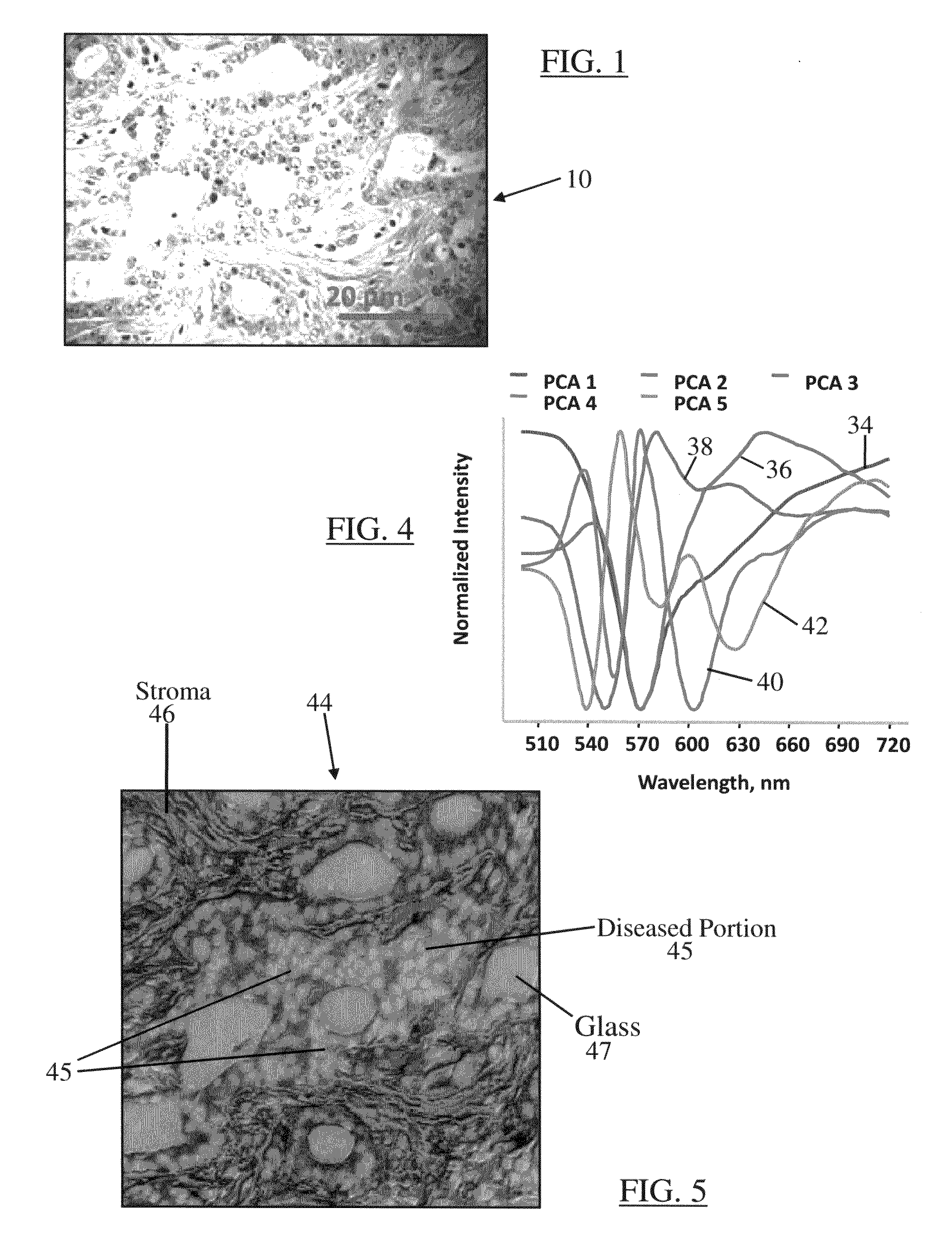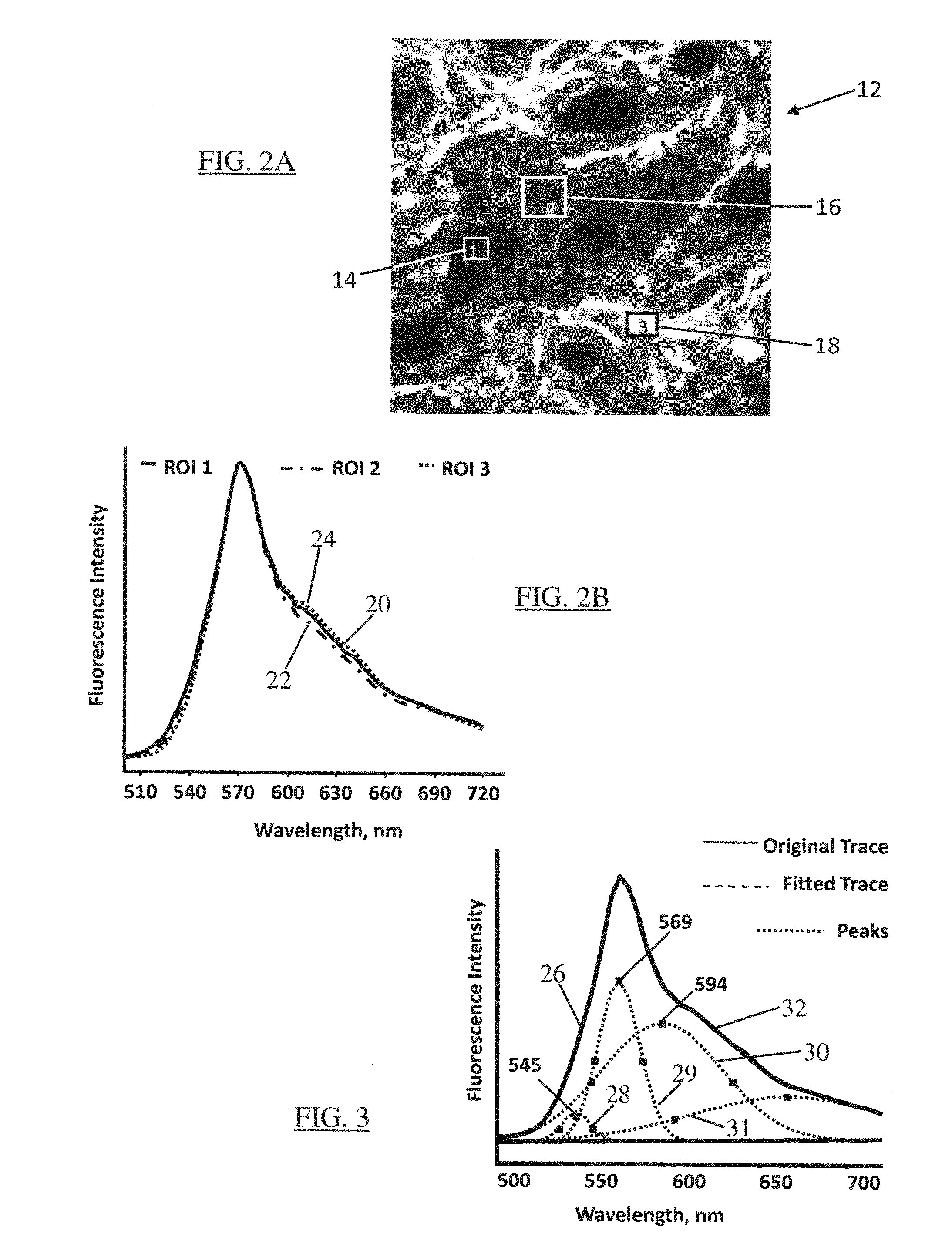Hyperspectral fluorescence and absorption bioimaging
a bioimaging and hyperspectral fluorescence technology, applied in the field of chemical imaging of biological tissues and samples, can solve the problems of inability to inability to accurately detect the presence of spatial artifacts, so as to achieve the effect of increasing specificity
- Summary
- Abstract
- Description
- Claims
- Application Information
AI Technical Summary
Benefits of technology
Problems solved by technology
Method used
Image
Examples
Embodiment Construction
[0023]The accompanying figures and the description that follows set forth the present disclosure in embodiments of the present disclosure. However, it is contemplated that persons generally familiar with optics, operation and maintenance of optical instruments (including spectroscopic instruments), or optical spectroscopy will be able to apply the teachings of the present disclosure in other contexts by modification of certain details. Accordingly, the figures and description are not to be taken as restrictive of the scope of the present disclosure, but are to be understood as broad and general teachings. In the discussion herein, when any numerical range of values is referred or suggested, such range is understood to include each and every member and / or fraction between the stated range of minimum and maximum. Furthermore, in the discussion below and in the accompanying figures, same reference numerals are used to describe same or similar elements, objects, or features.
[0024]The pr...
PUM
 Login to View More
Login to View More Abstract
Description
Claims
Application Information
 Login to View More
Login to View More - R&D
- Intellectual Property
- Life Sciences
- Materials
- Tech Scout
- Unparalleled Data Quality
- Higher Quality Content
- 60% Fewer Hallucinations
Browse by: Latest US Patents, China's latest patents, Technical Efficacy Thesaurus, Application Domain, Technology Topic, Popular Technical Reports.
© 2025 PatSnap. All rights reserved.Legal|Privacy policy|Modern Slavery Act Transparency Statement|Sitemap|About US| Contact US: help@patsnap.com



